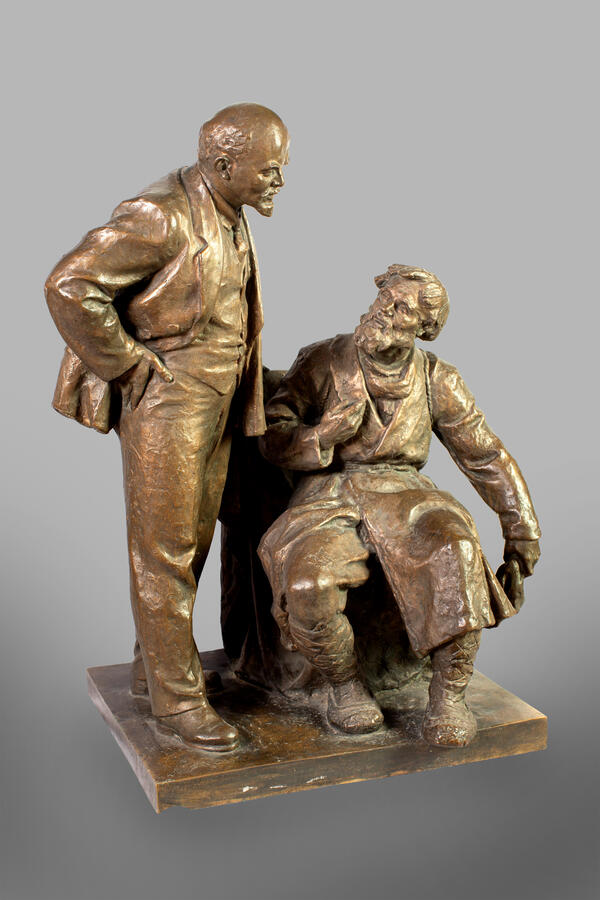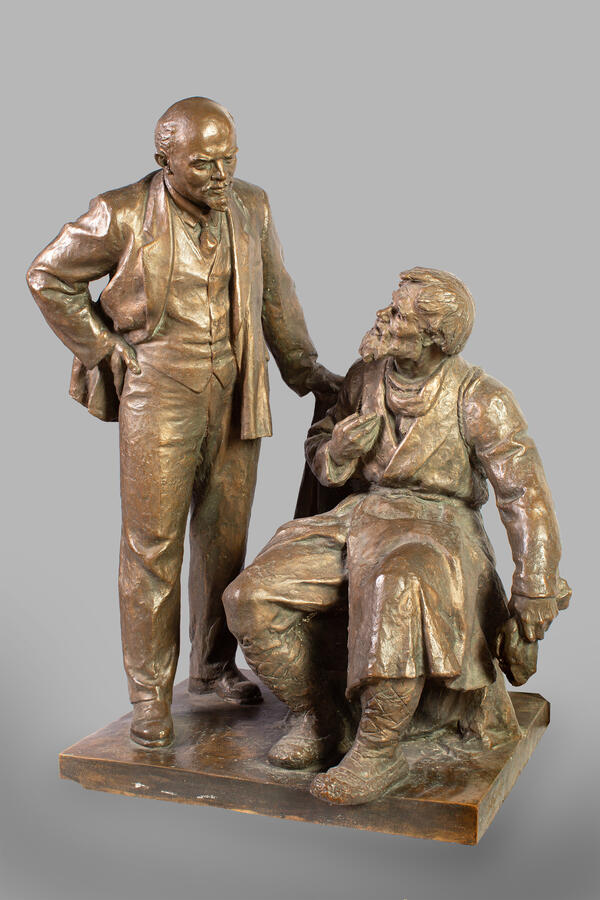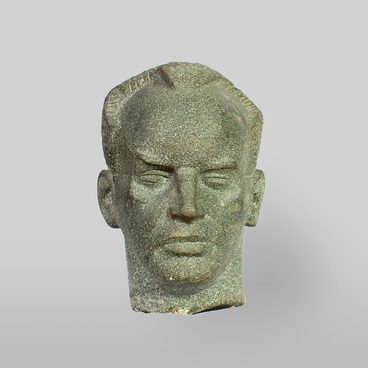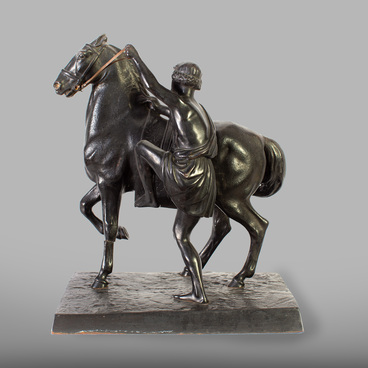The sculptural group called “Conversation about the Land” by Boris Vasilyevich Yedunov, presented in the museum’s collection, depicts a conversation between the leader of the Russian Bolshevik revolution, Vladimir Ilyich Lenin, and a peasant.
Boris Yedunov was born in the city of Vyksa, Nizhny Novgorod Region, into a family of office workers. He was drafted on June 22, 1941, and was wounded on June 25. He participated in battles on the Central and 1st Belorussian fronts and was awarded the medal “For Courage”. Yedunov graduated from the sculpture department of the Repin Institute, where he studied in the workshop of Vsevolod Lishev. After studying at the Academy of Arts, Boris Yedunov was invited to the creative studio of Nikolai Vasilyevich Tomsky, one of the leading sculptors of the time. Under his guidance, Boris Yedunov made a number of major monumental works. In the 1950s, he took part in contests for the creation of large-scale monuments. In 1956, he became a member of the Union of Artists of the USSR. The sculptor worked in different genres and created 16 monuments, erected in different cities of the USSR.
The sculptural image of Lenin and the peasant (the work “Conversation about the Land”) reflected the new ideological and creative trends that arose in the 1960s in Soviet fine arts and sculpture. It did not have the splendor and spectacular composition that was characteristic of sculpture in the 1940s and 1950s. The sculptor moved away from the pompous style of previous years. Emotional restraint, realism and, of course, social (most often, political) significance of the work, became the key criteria for choosing the subject of a work of art and its technique. Many works of Boris Yedunov, made in stone and metal, have found their place in various museums of the country — from the Tretyakov Gallery to the Bolshoi Theater Museum.
Boris Yedunov was born in the city of Vyksa, Nizhny Novgorod Region, into a family of office workers. He was drafted on June 22, 1941, and was wounded on June 25. He participated in battles on the Central and 1st Belorussian fronts and was awarded the medal “For Courage”. Yedunov graduated from the sculpture department of the Repin Institute, where he studied in the workshop of Vsevolod Lishev. After studying at the Academy of Arts, Boris Yedunov was invited to the creative studio of Nikolai Vasilyevich Tomsky, one of the leading sculptors of the time. Under his guidance, Boris Yedunov made a number of major monumental works. In the 1950s, he took part in contests for the creation of large-scale monuments. In 1956, he became a member of the Union of Artists of the USSR. The sculptor worked in different genres and created 16 monuments, erected in different cities of the USSR.
The sculptural image of Lenin and the peasant (the work “Conversation about the Land”) reflected the new ideological and creative trends that arose in the 1960s in Soviet fine arts and sculpture. It did not have the splendor and spectacular composition that was characteristic of sculpture in the 1940s and 1950s. The sculptor moved away from the pompous style of previous years. Emotional restraint, realism and, of course, social (most often, political) significance of the work, became the key criteria for choosing the subject of a work of art and its technique. Many works of Boris Yedunov, made in stone and metal, have found their place in various museums of the country — from the Tretyakov Gallery to the Bolshoi Theater Museum.




